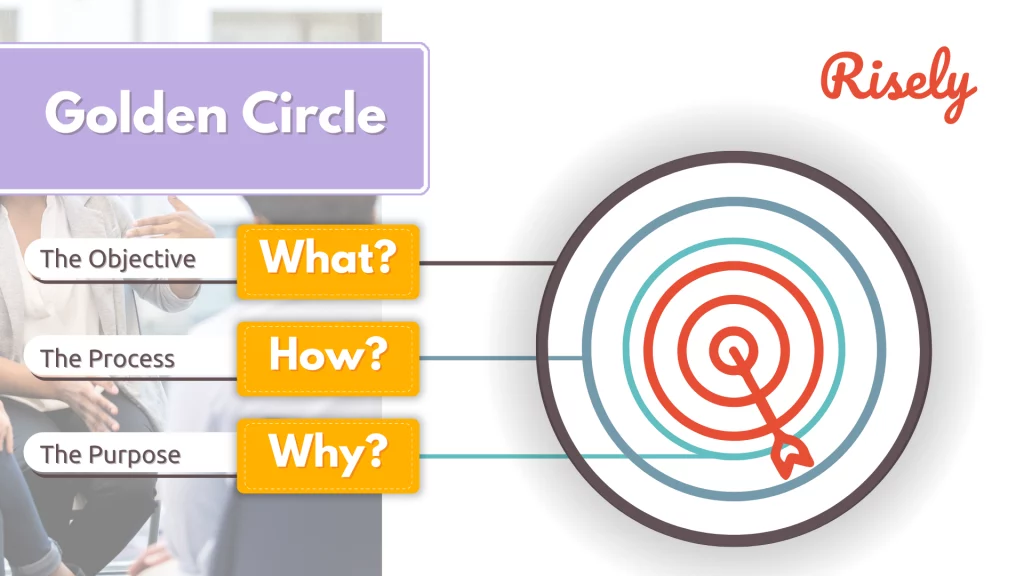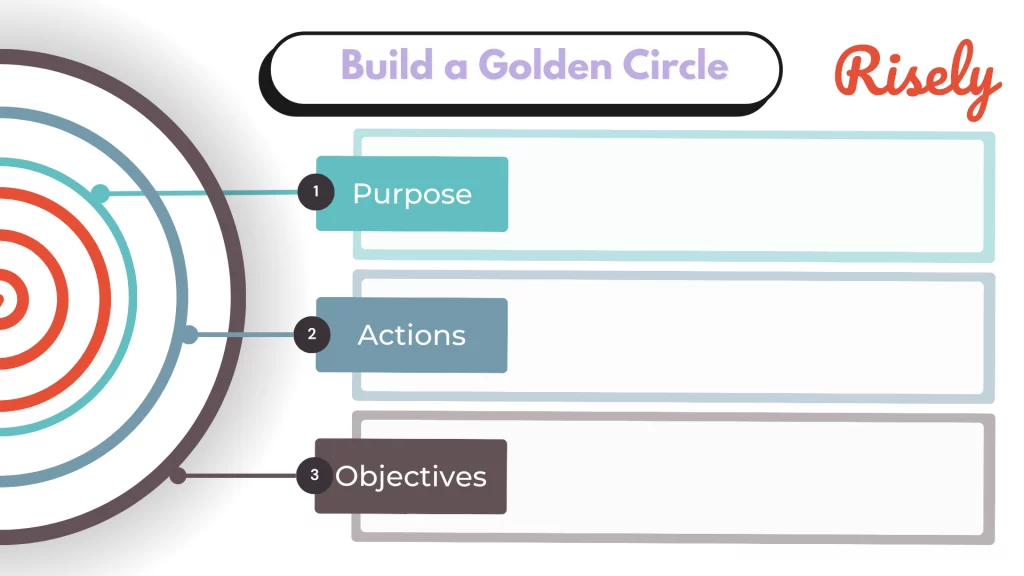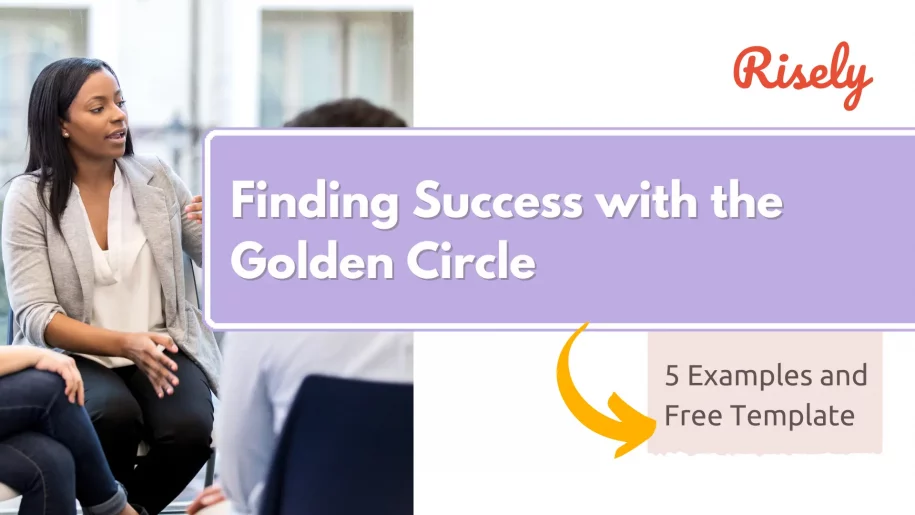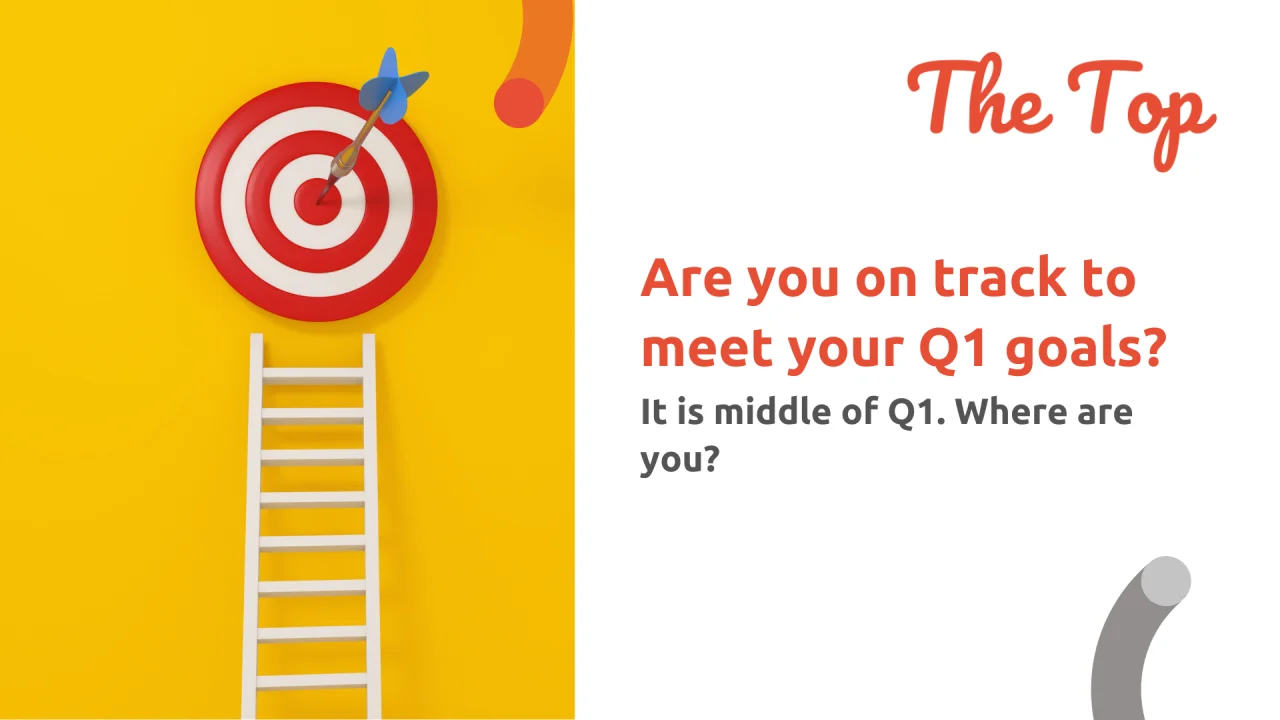Finding Success with the Golden Circle: 5 Examples and Free Template
If you want to inspire others or look for a way to make your message more impactful, the Golden Circle theory can significantly benefit you. This theory breaks down critical principles of leadership into three simple steps. First, it is based on the golden circle principle that people buy from people they believe in and trust. In this blog, we’ll look at the golden circle theory and how you can use it in your daily conversations to bring out the best in your team. But before getting into the golden circle model and how it can help you inspire others, let’s first understand what the golden circle theory is all about.What is the Golden Circle?
The Golden Circle theory is a framework developed by Simon Sinek to understand the behavior and motivation of individuals and organizations. It shifts the focus from “what” a company does to “why” it does it, allowing leaders to inspire and connect with their teams, customers, and stakeholders on a deeper level.The Why, How and What Explained

THE WHY
Why The “why” question is at the center of the Golden Circle theory of goal setting, representing the fundamental reason or purpose behind an individual or organization’s actions. According to Sinek, the “why” is the driving force that inspires people and organizations to innovate, push boundaries, and achieve greatness. The core belief or value motivates people to take action and make a difference in the world. For example, the “why” of Apple is to challenge the status quo and think differently. This belief is at the core of everything they do, from designing innovative products to creating a unique brand identity; by starting with the “why,” Apple has developed a loyal following of customers who share its vision and values.THE HOW
How The “how” question represents the strategies, tactics, and actions, an individual or organization uses to achieve their “why.” It involves the specific plans and processes put in place to realize the goals and vision of the organization. The “how” is how an organization executes its mission and brings its purpose to life. For example, the “how” of Apple is to design beautifully designed, easy-to-use, and innovative products. They achieve this through cutting-edge technology, exceptional design, and a focus on user experience. By executing their “how” effectively, Apple has created some of the world’s most popular and successful products.The WHAT
The “what” question represents an organization’s specific products, services, or solutions. This includes an organization’s tangible and visible aspects, such as its products, services, and marketing materials. While the “what” is essential, Sinek argues that it is not the most critical factor in achieving success. Instead, he suggests that the “why” should be at the forefront of an organization’s messaging and decision-making processes. For example, the “what” of Apple is a range of products, including iPhones, iPads, and Macs. While these products are essential to Apple’s success, they are not the core focus of its messaging or marketing. Instead, Apple focuses on its “why” and “how,” using these elements to create a compelling brand identity that resonates with customers and inspires loyalty. The Golden Circle theory suggests that successful individuals and organizations start with a clear sense of purpose and a deep understanding of their values and beliefs. By first focusing on the “why” and developing effective strategies and tangible solutions to achieve their goals, organizations can create a powerful brand identity that resonates with customers and drives success.OtherInterestingReads
The benefits of using the Golden Circle model
Simon Sinek’s Golden Circle theory is a model that helps individuals and organizations to understand their purpose and communicate it in a way that inspires others. Here are some of the benefits of using this theory:- Clarifies purpose: The Golden Circle theory helps to clarify the “why” behind what we do, which provides direction and focus. By understanding the purpose behind our actions, we can make better decisions and stay motivated.
- Creates emotional connection: The theory helps to create an emotional connection between individuals and their audience or customers. By communicating the purpose in a way that resonates with people’s emotions, individuals and organizations can build strong relationships with their audience or customers.
- Differentiate from the competition: Individuals and organizations can differentiate themselves from the competition by focusing on the purpose rather than just the product or service. This can be especially important in crowded markets with similar products or services.
- Inspires action: The Golden Circle theory helps to inspire action by communicating a clear and compelling purpose. By connecting with people’s emotions, individuals and organizations can motivate them to take action and achieve their goals.
- Builds loyalty: By communicating a purpose that resonates with people’s emotions, individuals and organizations can build solid and loyal relationships with their audience or customers. This can lead to long-term success and sustainability.
Examples of the Golden Circle in action
Here are some examples of the Golden Circle in action, showcasing how various companies and organizations have applied this framework to clarify their purpose and communicate it effectively to their audience. From technology giants like Apple to nonprofit organizations like the American Red Cross, these examples illustrate the versatility and effectiveness of the Golden Circle in driving success and building lasting relationships.- Martin Luther King Jr.: Martin Luther King Jr.’s famous “I have a dream” speech exemplifies the Golden Circle in action. His “why” was the belief that all people are created equal and should be treated as such. His “how” was through peaceful protests and civil disobedience, and his “what” was the civil rights movement, which aimed to end racial segregation and discrimination.
- Southwest Airlines: Southwest Airlines is a company that uses the Golden Circle to differentiate itself from competitors. Their “why” is democratizing air travel and making it accessible to everyone. Their “how” is through providing low-cost flights, excellent customer service, and a no-frills experience. Finally, their “what” is their flight network, which serves many destinations across the United States.
- TED Talks: TED Talks are another example of the Golden Circle in action. The “why” behind TED Talks is to spread ideas worth sharing and inspire people to take action. The “how” is through organizing conferences and inviting speakers from various fields to give talks on their ideas. The “what” is the talks, recorded and made available online for free.
- The Body Shop: The Body Shop is a company that uses the Golden Circle to emphasize its commitment to ethical and sustainable business practices. Their “why” is to promote social and environmental change by offering cruelty-free, ethically sourced products made with natural ingredients. Their “how” is through partnering with suppliers who share their values, using sustainable packaging, and supporting various social and environmental causes. Finally, their “what” is their product line, which includes skincare, makeup, and other beauty products.
- The American Red Cross: The American Red Cross is an organization that uses the Golden Circle to communicate its mission of providing emergency assistance, disaster relief, and education. Their “why” is to prevent and alleviate human suffering in emergencies. Their “how” is through mobilizing volunteers, providing financial assistance, and offering training programs. Their “what” is the range of services they provide, such as blood donation, disaster response, and support to military families.
Golden Circle Free Template for Managers

Conclusion
The golden circle theory is a tool that can help you to understand your target audience and inspire them to take action. It’s a simple yet powerful model that can help you connect with people emotionally and show how what you do helps them. Using it correctly makes people feel motivated to follow your lead and act. We hope this helps better understand the golden circle model and inspires you to use it for your next project!Circle or a spiral – Do your goals have the clarity they need?
Test your goal-setting skills now with Risely’s free goal-setting assessment for managers and teams.
Other Related Blogs
Are you on track to meet your Q1 goals?
Are you on track to meet your Q1 goals? We are in the middle of the first quarter of 2024. Seems hard to believe. It surely is! ⏰ Time has…
5 Secrets Of Solid Goal Setting At Work You Can’t Miss
5 Secrets Of Solid Goal Setting At Work You Can’t Miss “I don’t focus on what I’m up against. I focus on my goals and I try to ignore the…
Understanding the world of Goal Setting Coach to reach new heights
Understanding the world of Goal Setting Coach to reach new heights Setting and achieving goals is essential for personal and organizational success in today’s fast-paced and competitive work environment. However,…
Manager’s Guide to Collaborative Goal-setting (with examples)
Manager’s Guide to Collaborative Goal-setting (with examples) Collaborative goal-setting is an essential process that enables teams to work together towards a common objective. It involves creating shared goals that align…


